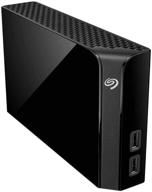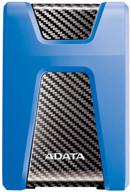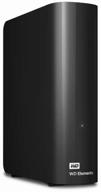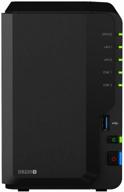
Review on QNAP TS 230 Cortex A53 Quad Core Processor by Kadarius Gentry

Exceeds expectations, especially for an entry-level NAS
First, QNAP models' hardware is often much cheaper than Synology, but Synology has the edge in software. For budget NAS, 2GB of RAM is pretty good, though not expandable. In terms of user interface, it's not as easy to set up as a Synology NAS. However, once configured, it offers some very useful features such as: B. the ability to mount cloud services (Dropbox, GDrive) as file shares, so this can be very helpful for Linux boxes that are hard to find a reliable client for. It also offers a decent offsite backup program, good volume encryption (using LUKS, the Linux standard) and, very importantly, two-factor authentication. do and add disk/CPU overhead. By treating all the contents of your cloud drive as a simple shared folder, it saves a lot of overhead. I definitely plan on buying a few of these. This will eventually be moved to a standby server and I will buy a larger one to serve files and handle lightweight virtualization. HybridMount and File Cloud Gateway functionality is a must. I've used it to move terabytes of data out of the office, and after the data is copied to the caching drive, the NAS does the rest, keeping it in sync with added compression and encryption. The beauty of this is that you don't have to keep all of your cloud storage in sync, so it only needs a relatively small cache for most things. I only have three complaints: 1: The UI is very busy. For those used to Synology devices where you just set up the file system and then add shares, you need to think about how to partition and leave free space for snapshots. Synology uses btrfs snapshot function while this NAS Linux uses LVM2, LVM2 is much more stable but at block level. It's not as easy as with Synology where you can just set and forget on this platform and then add/encrypt/change shares as needed. 2: The included firewall and the optional QuFirewall are limited. For example, I want to allow subnet access to file shares, but I want only 2-3 computers to have access to the web management interface. Either I give full access to the box or no access. no intermediaries as this does not block the web interface. I wish there was a way to solve this as the web portal is a big source of attacks so I want to limit it to controlling machines. 3: I wish it could use something like Btrfs above so one can have transparent file compression. This helps a lot in some applications that store a lot of redundant data. However, their higher-end models use QTS Hero or other ZFS-embedded variants that handle this.
- High marks for support and durability from testers
- Appearance
New products
Comments (0)
Top products in 🗄️ Network Attached Storage
Another interesting products

8TB Seagate Backup Plus Hub Desktop Hard Drive with Data Recovery Services

56 Review

2 TB External HDD ADATA DashDrive Durable HD650, USB 3.2 Gen 1, Blue

55 Review

🔜 Seagate Backup Plus Slim STHN2000400 2TB Portable Hard Drive - Black: Your Reliable External Storage Solution

93 Review

18 TB External HDD Western Digital WD Elements Desktop, USB 3.0, black

95 Review





![zyxel nas326: personal cloud storage [2-bay] with remote access & media streaming – disks not included logo](https://images.revain.org/blob/revain_storaget1i45yp6_fce0cc3168@128x128.jpg)